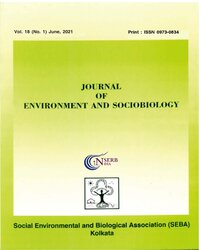Phytoremediation of Organophosphorus Pesticide-A Cost Effective and Environment Friendly Method
Subscribe/Renew Journal
Organophosphorus pesticides (OPs) have contaminated environmental compartments in many countries, increasing the risk of contamination in food, ground water and other water resources. The only feasible solution over here is the use of environmental engineering like phytoremediation to avoid the run-off of the pesticides to the ground water sources or the surface water bodies. Environmental duckweed is chosen as the aquatic plant to observe the rate of disappearance of OPs in increasing concentrations of 1/20 LD50 for seven different OPs. Chromatography is the method of choice which is both sensitive and economical for identification of these pesticides in biological materials. The chlorophyll content of duckweed on 3rd days, 5th days and 7th days of incubation of pesticides was also observed. In case of phytoremediation, OPs were taken to formulate the predicting equation which would show how far a toxic agent could be remediated. Here the assumed model is balanced two stage nested model (in ANCOVA set up). Utilising the linear model a pesticide could be designed with high phytoremediable characteristics. From the study it can be proposed that the residual content of pesticide can be minimized by using natural resource like suitable plants in water bodies surrounding the agricultural fields.
Keywords
Organophosphorus Pesticide, Duckweed, Phytoremediation, Predicting Equation.
Subscription
Login to verify subscription
User
Font Size
Information



